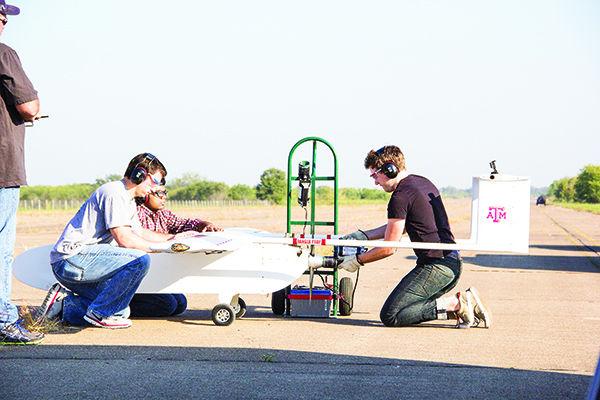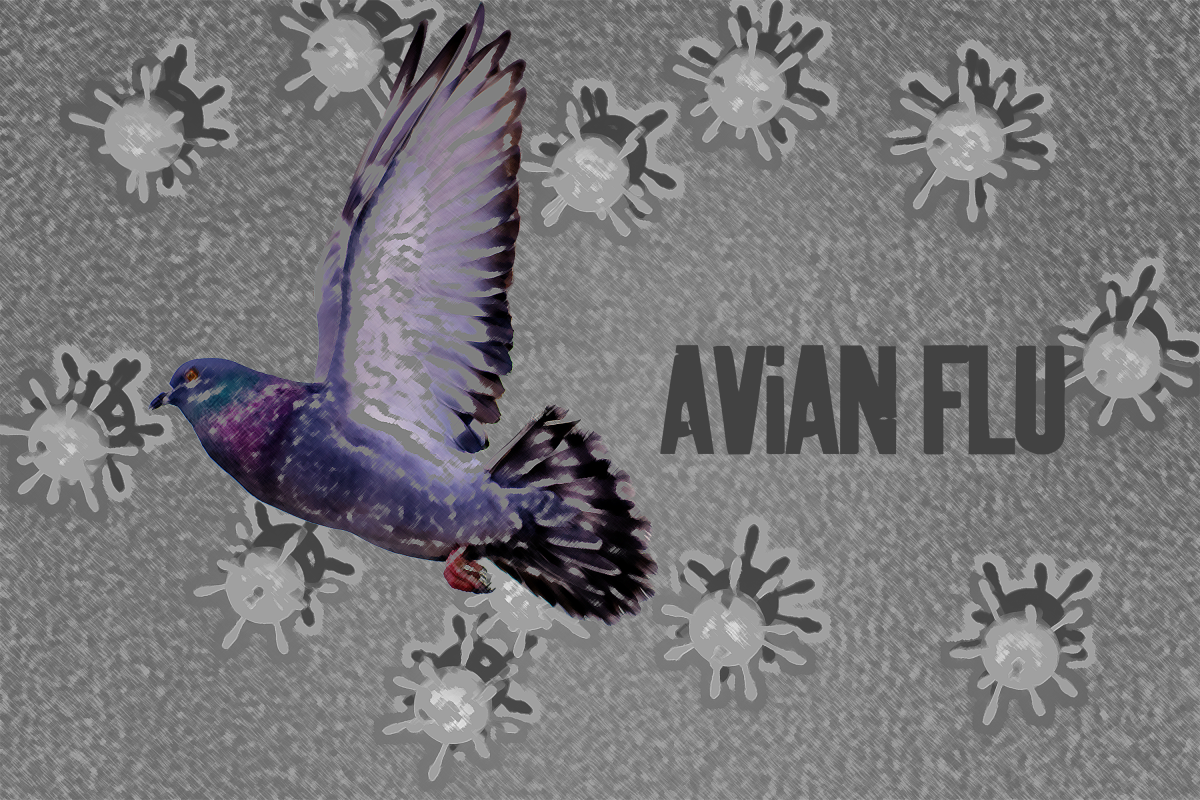Texas A&M continues to seek new heights in unmanned aircraft research as a federal program begun early this year in Texas matures.
Researchers conducted a Saturday morning flight test of Pegasus II, the largest unmanned aircraft system at Texas A&M thus far. The flight tests and research aim to eventually integrate UAS into U.S. airspace, as the aerospace industry prepares for federal clearance to use unmanned systems commercially.
Texas A&M’s research focuses on UAS applications in agriculture and public infrastructure. UAS may one day inspect the structural health of roads, bridges and pipelines. The research team also works on enabling humanitarian relief by UAS, which could one day send food, water and medical supplies into a disaster area.
UAS have not yet been approved for commercial use by the Federal Aviation Administration — a development that takes time, said John Valasek, aerospace engineering professor and director for the center for autonomous vehicles and sensor systems.
“Companies cannot take this and use it yet, but we are being sponsored and funded by a company who is developing and getting it ready for when the FAA will allow commercial operations,” Valasek said.
The recent flight of Pegasus II was controlled from a ground control station, which allows the research team to track what the vehicle is doing in flight. Jim Henrickson, aerospace engineering graduate student, has worked with UAS systems since 2012. He said the team plans to expand the program’s telemetry research — the transmission of data between the ground control station and the vehicle.
“We will be able to set up a path and waypoints on the computer which will then be sent to the vehicle, and the vehicle will be able to fly without a pilot,” Henrickson said. “We’ve done it on smaller vehicles and we are hoping to do it on a bigger vehicle soon.”
The transformation from remote to computer control is a main theme of the UAS progression, and Henrickson said another advancement in the area is in progress.
“We will have a camera looking forward from the vehicle and a screen on the ground showing what the vehicle is seeing,” Henrickson said. “A person will be sitting at the computer with a joystick flying the vehicle as if they are sitting in it.”
Flight tests occur at Texas A&M’s Riverside Campus. Valasek said the location may soon be a landmark in aerospace history.
“This is a very new way for the UAS to be flying,” Valasek said. “We will either be the first, or one of the very first, to fly one of these very shortly.”
A Universal Access Transceiver testing program, UAT, is also being supported and funded. A UAT is a transponder that broadcasts a message from a UAS so that air traffic control will be able to see it when it enters the airspace.
The research program began with commercial road and agriculture inspection and ensured flight safety in various environments and conditions. The program has a total of eight flight vehicles of various sizes, and Pegasus II is the largest at 105 pounds.
Valasek said Texas A&M’s UAS research has expanded. Seventeen undergraduate and five graduate aerospace engineering students now make up the research team. The team tests increasingly sophisticated UAS capabilities as the research continues to yield results.
UAS will continue to be developed for agriculture precision, infrastructure assessment and humanitarian relief purposes. The system capabilities include flying over crops while assessing stressors such as potential for insect plights, detecting the health of crops and identifying specific crop types. The systems will also be able to track and make assessments of wildlife, forestry and the conditions of national parks.
Research seeks new heights
October 26, 2014

Photo by Cody Franklin
Aerospace engineering graduate student Jim Henrickson (right) and fellow researchers prepare Pegasus II for take-off Saturday morning at Texas A&M’s Riverside Campus.
0
Donate to The Battalion
$810
$3500
Contributed
Our Goal
Your donation will support the student journalists of Texas A&M University - College Station. Your contribution will allow us to purchase equipment and cover our annual website hosting costs, in addition to paying freelance staffers for their work, travel costs for coverage and more!
More to Discover









